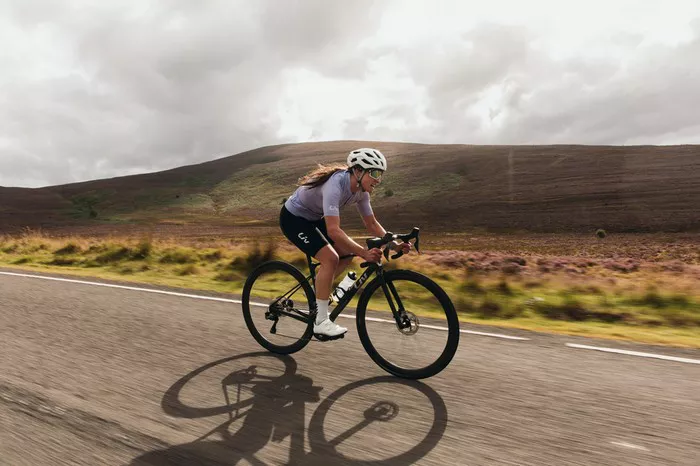Embarking on the journey of cycling can be an exhilarating experience, but for beginners, the plethora of bike options available in the market can often be overwhelming. Whether you’re looking to hit the open road, explore off-road trails, or simply commute to work, selecting the right bike tailored to your needs is crucial for an enjoyable riding experience. In this guide, we’ll navigate through the different types of bikes, factors to consider when making your selection, and additional resources to ensure you make an informed decision.
Different Types of Bikes:
1. Road Bikes:
Road bikes are designed for speed and efficiency on smooth pavements. Featuring lightweight frames, narrow tires, and drop handlebars, they are ideal for long-distance rides and high-speed cruising. However, their narrow tires and aggressive geometry make them less suitable for rough terrain, gravel paths, or off-road trails.
2. Mountain Bikes:
Mountain bikes are built to tackle rugged off-road terrain with ease. With their sturdy frames, wide knobby tires, and suspension systems, they offer stability and control on challenging trails. Mountain bikes are versatile, but their heavy build and knobby tires may compromise speed and efficiency on paved roads compared to road bikes.
3. Hybrid Bikes:
Hybrid bikes blend features from both road and mountain bikes, offering versatility for various riding conditions. With a more upright riding position, wider tires, and often a suspension fork, hybrid bikes are suitable for both paved roads and light off-road trails. They are perfect for casual riding, commuting, and recreational activities.
4. Commuter Bikes:
Commuter bikes prioritize practicality and comfort for daily urban commuting. They typically feature a more relaxed geometry, fenders to protect against splashes, racks for carrying cargo, and sometimes even built-in lighting systems. Commuter bikes provide a comfortable and efficient means of transportation in city environments.
5. Cruiser Bikes:
Cruiser bikes are all about laid-back style and comfort. With their classic design, wide handlebars, and cushioned seats, they offer a leisurely and relaxed riding experience, making them perfect for casual rides along the beach or through the neighborhood. However, they are less suited for long-distance or speedy rides due to their heavier build and single-speed gearing.
Factors to Consider When Choosing a Bike:
1. Riding Style and Terrain:
Consider the type of riding you’ll be doing most frequently. If you plan to primarily ride on paved roads for fitness or long-distance touring, a road bike might be the best choice. For off-road adventures and trail riding, a mountain bike would be more suitable. Hybrid bikes offer versatility for mixed terrain, while commuter bikes and cruisers cater to specific urban or leisurely riding needs.
2. Budget:
Set a budget range based on your financial constraints. Road bikes and mountain bikes tend to be pricier due to their specialized features and materials, while hybrid bikes, commuter bikes, and cruisers offer more budget-friendly options. It’s essential to strike a balance between features and cost to ensure you get the best value for your money.
3. Fit and Comfort:
Proper bike fit is paramount for comfort and performance. Consider your height, inseam length, and riding position preferences when selecting the right frame size and geometry. Visit a local bike shop for a professional fitting or use online sizing guides provided by reputable bike brands.
4. Components:
While it’s essential to understand the basic components of a bike such as gears, brakes, and frame material, beginners need not delve too deeply into technical specifications. Focus on reputable brands known for reliability and durability, and ensure the bike’s components are suitable for your intended use.
5. Brand Reputation and Reviews:
Researching reputable bike brands and reading customer reviews can provide valuable insights into the quality and performance of different models. Look for brands with a track record of producing reliable bikes and positive feedback from users who share similar riding preferences.
Additional Resources and Tips:
1. Local Bike Shops:
Visiting local bike shops allows you to receive expert advice, test ride different models, and receive personalized recommendations based on your needs and preferences. Additionally, bike shops offer professional fitting services to ensure optimal comfort and performance.
2. Online Bike Retailers:
Online retailers provide convenience and a wide selection of bikes at competitive prices. While purchasing online offers convenience, it’s essential to research thoroughly and consider factors such as shipping costs, assembly requirements, and return policies before making a purchase.
3. Second-hand Bikes:
Consider exploring the option of purchasing a used bike to potentially save money while still obtaining a quality ride. However, exercise caution and thoroughly inspect the bike for any signs of wear or damage before making a purchase. It’s also advisable to have a knowledgeable friend or mechanic accompany you for assessment.
4. Safety Gear:
Prioritize safety by investing in essential protective gear such as helmets, reflective clothing, and lights for visibility, especially when riding in low-light conditions or busy urban areas. Safety should always be a top priority when cycling, regardless of experience level.
5. Maintenance Basics:
Learn basic bike maintenance tasks such as tire inflation, chain lubrication, and brake adjustments to keep your bike in optimal condition and prolong its lifespan. Regular maintenance ensures a smooth and safe riding experience while minimizing the risk of mechanical issues.
Conclusion
In conclusion, selecting the right bike as a beginner involves considering factors such as riding style, terrain, budget, fit, and comfort. By understanding the different types of bikes available and evaluating your specific needs, you can make an informed decision that sets you up for an enjoyable and rewarding cycling journey. Utilize the resources and tips provided to navigate the bike-buying process with confidence and embark on your cycling adventures with excitement and confidence.

